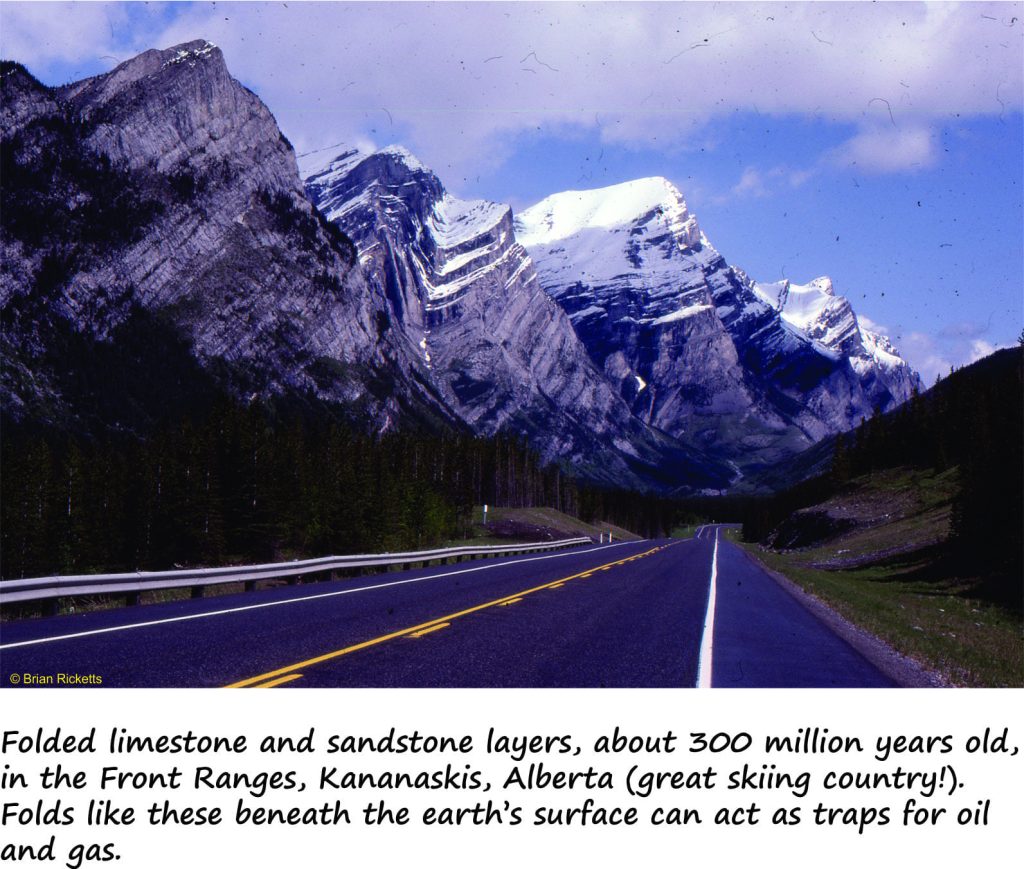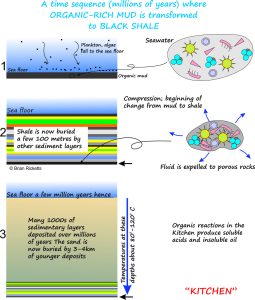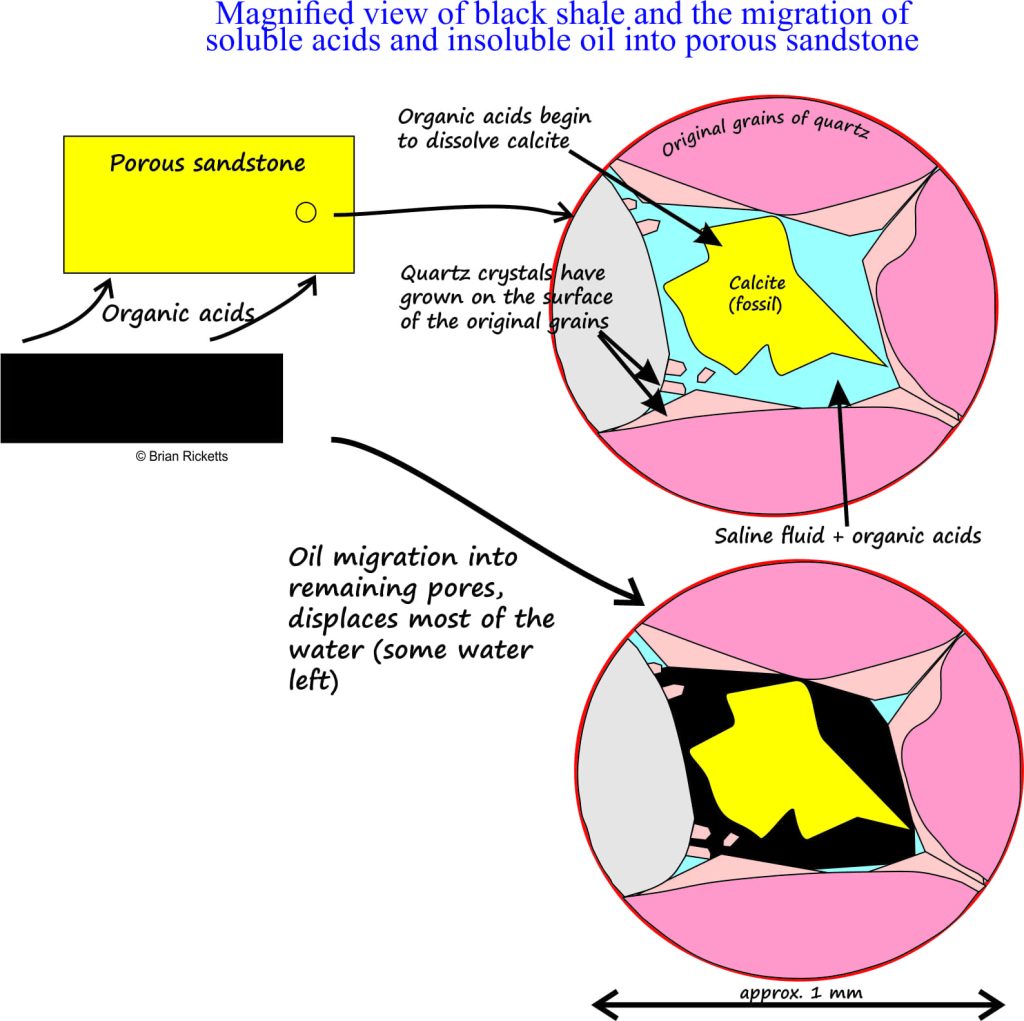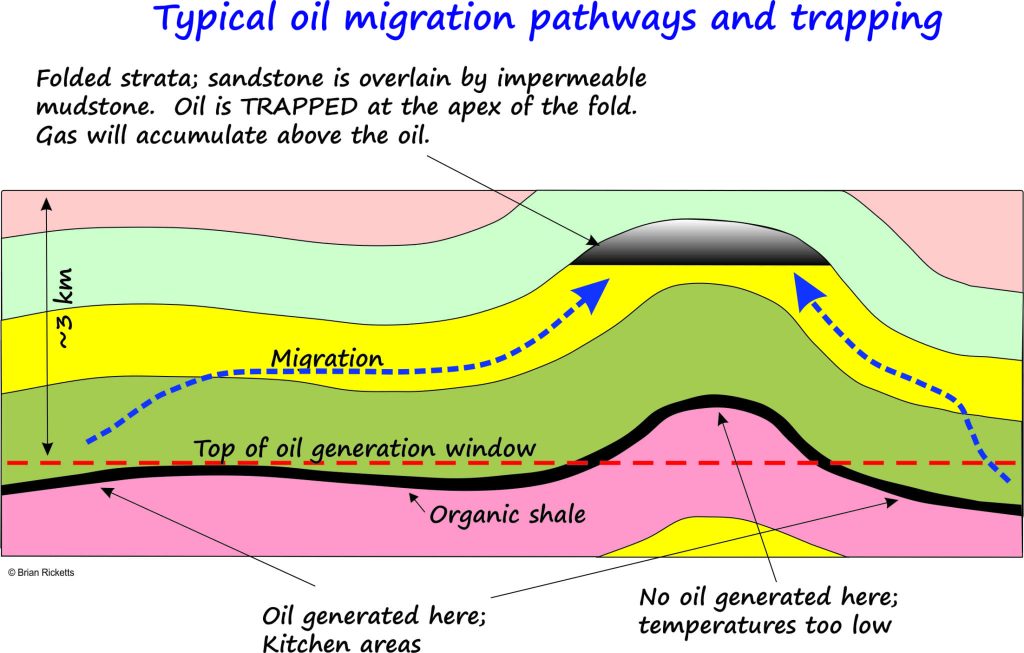Oil is a Part of the Rock
As a kid growing up in NZ, my only contact with ‘O&G’ was watching my Dad filling the family car with (at that time leaded) gasoline, and Jed Clampett watching black gold oozing from his backyard. Jed and his family had to forgo the possums, grits and cat’s paws for the rarefied atmosphere, with a twist of lemon, of Beverly Hills. They had made their fortune on Texas Tea like countless others have done since.
Modern societies depend hugely on hydrocarbons (oil and gas), either directly or indirectly; fuels, plastics, construction, medicines, communications, space travel, renewable energy – the list goes on. It is easy to forget that oil, in its original form is, like water a geological fluid, albeit one that behaves differently to water. Oil is part of the rock and it is inextricably involved in the formation of sedimentary rocks.
Humble beginnings
All hydrocarbons are organic chemical compounds. Most (except vegetable extracts) are geological fluids. Hydrocarbons are derived from two main sources of organic material; microscopic marine plankton, and terrestrial plants and algae. In marine environments, especially seas that have high nutrients, various forms of plankton and small critters abound. When they die they sink to the sea floor. If waters near the sea floor are oxygenated, then much of this detritus will be scavenged by other bottom-dwelling critters, or the organic material will oxidize. However, if the bottom-waters are anoxic (lack sufficient dissolved oxygen) then the organic detritus has a much greater chance of being preserved. If the sedimentation rate of non-organic muds and silts is also low then organic matter will tend to concentrate in layers (if sediment input is high the organic matter will be diluted). Layers of organic-rich sediment are commonly referred to as black mudstones, black shales, or oil shale. Black shales, under the right geological conditions are the primary source of hydrocarbons.
Black shales, including oil shales commonly contain from 0.5% to more than 30% organic matter. Some of these shales represent significant past anoxic events that can be traced over great distances, continent-wide and even globally. As such they can tells us a great deal about some rather unsavoury environmental conditions in the distant past. One such event about 94 million years ago (Cretaceous Period) occurred when global climates were very warm (no icecaps), when CO2 levels in the atmosphere were high (Hothouse conditions), and when there was significant volcanism. The oceans, especially the deeper parts became deficient in oxygen on almost a global scale. There are very few marine critters that like living in these conditions. An important consequence of events like these is the extinction of significant marine life.
A kitchen brew
Sediments undergo major changes as they are buried deeper and deeper by other strata. The increasing weight of overlying sediment leads to compression, that in turn expels fluid, usually modified seawater. These fluids promote chemical reactions. Increasing depth in the earth’s crust also means increasing temperature; the global average is about 25oC per kilometer depth (also known as the geothermal gradient), but there is a fair bit of variation depending, for example on the age of the crust (older crust tends to be colder) and proximity to sources of magma. An important consequence of these changes is that new minerals can form in the open pores; these minerals precipitate from saline water that continually percolates through the buried sediment. Quartz, calcite and clays are most common and their formation helps to cement the once loose sediment into hard rock.
Organic matter also undergoes significant transformations as it is buried and heated. The original material, whether cellulose, algae, or plankton, begins to break down almost immediately after it accumulates on the sea or lake floor or in a peat bog; this process accelerates as temperatures increase during burial. The insoluble products of this breakdown process produce complex organic molecules called kerogens and it is the continued transformation of kerogen that eventually leads to the formation of hydrocarbons. Different kinds of kerogen (e.g. algae or plankton) promote different hydrocarbon products; marine plankton and algae generally result in oils, whereas woody tissues and plant material will promote a mix of oil and gas, or just gas.
The breakdown of organic matter also results in soluble compounds, especially organic acids including acetic acid (aka vinegar). These organic acids play a significant role in the cementing of rocks or dissolution of minerals such as calcite, especially by regulating or buffering acidity (pH). Thus, the formation of hydrocarbons is an integral part of the transformation of sediment to rock.
The transformation of kerogen to various hydrocarbon products is greatly accelerated at about 80oC, corresponding to a burial depth of about 3 km. The window of accelerated oil production extends to about 120o-130oC; it is commonly referred to as the oil generation window. At higher temperatures there is an increasing tendency for the organic chemical reactions to produce gas. From a geological perspective, the temperature range 80o to 130oC is also the window in which other rock-forming processes are most reactive, especially those that promote either the precipitation or dissolution of minerals and mineral cements.
Migration
Organic, kerogen-rich shales that have been buried deep enough to enter the oil generation window have entered the hydrocarbon kitchen. As hydrocarbons are produced, the new fluids move (slowly) through the shale and into more porous sandstones or limestones. This stage is referred to as migration. The main driving force for migration is buoyancy; hydrocarbons have lower specific gravity than fresh water and brines and will tend to displace water as they move through the more porous rocks. Migration continues until either the hydrocarbons are trapped by less permeable strata, or they will continue through the strata and if unimpeded will eventually escape at the sea floor or seep at the land surface. Natural oil and gas seeps are common in many oil-provinces around the world. An example of trap-like structures is shown in the photo at the top of this post.
The entire process of initial deposition, burial by other sediment, cooking in the kitchen, migration and final trapping takes millions of years. It all happens very slowly. Oil and gas trapped in this way is also naturally sequestering carbon. The hydrocarbons will stay trapped until the trap is disturbed, for example by faults and fractures that oil can leak from, or until someone discovers the deposit and pumps it out – at which point… .
Here are some sites with animations of oil formation and migration. Also some teaching resources






















1 thought on “The Oil Kitchen Rules”
Pingback: pikachu onesie